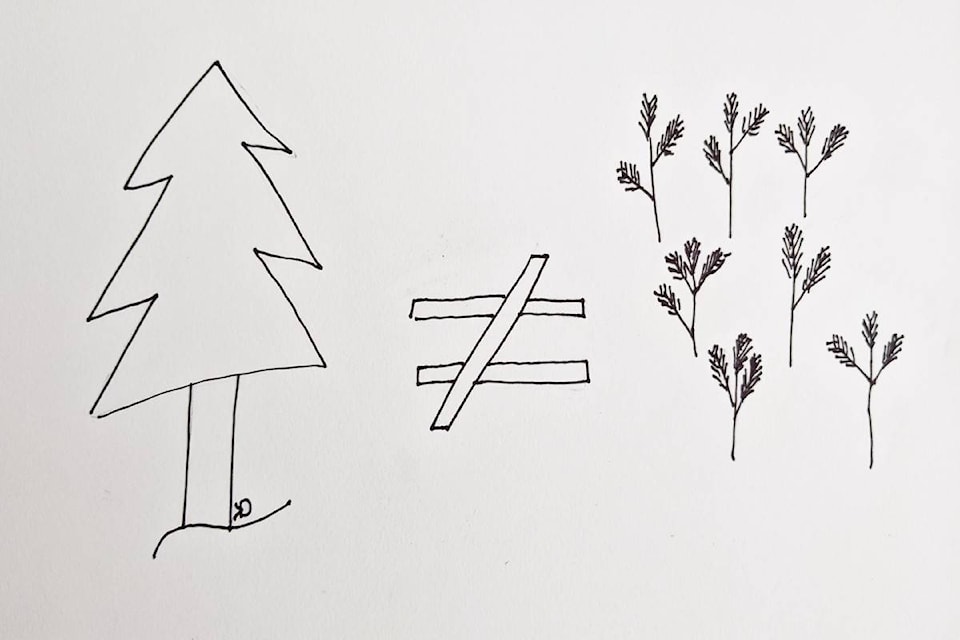You may be aware that we mine for coal in British Columbia. Thanks to hydroelectric power, we have some of the cleanest electricity anywhere on the planet. We donsa���ʴ�ý�t burn coal for electricity ourselves. Instead we enable other peoplesa���ʴ�ý�s coal habit.
BC is doing something very similar with wood pellets. British Columbia exports wood pellets to Europe and Japan. An accounting loophole in the UN Framework Convention on Climate Change and the Kyoto Protocol means that carbon emissions from wood burning of any kind fall under sa���ʴ�ý�land usesa���ʴ�ý�, not sa���ʴ�ý�energysa���ʴ�ý�. This means that Germany or Japan doesnsa���ʴ�ý�t have to include the smoke rising from pellet stoves or electricity plants in their greenhouse gas emissions reports if the wood is imported. British Columbia includes carbon-storage lost from cutting down trees, but not the carbon emitted from burning. As a result each year world-wide there is more and more carbon in the atmosphere from burning wood.
This isnsa���ʴ�ý�t the only confusion over wood fuel
Subsidies because pellets are part of the sa���ʴ�ý�natural carbon cyclesa���ʴ�ý�: To make matters worse BC is providing 27 million dollars in subsidies to sa���ʴ�ý�increase the use of wood fibresa���ʴ�ý� (see keep jobs running in North Okanagan).
Europe is providing subsidies to turn coal fired electricity into wood-fired electricity. Why? The argument is that the wood carbon cycle is natural. Trees gather carbon, grow tall, then die and release carbon. We harvest the trees, burn them, releasing the carbon, and as long as we plant new trees, everything is in balance. There are a couple of problems with this argument. First, many carbon models confirm that the numbers do balance, but only when the new trees are about a hundred years old. Thatsa���ʴ�ý�s way too late for the planet. Second, many organizations feel that BC is not accurately monitoring forest use or isnsa���ʴ�ý�t planting and maintaining enough trees to make up for the amount of logging we do.
READ MORE:
Mature trees are sneaking into pellet food: The idea behind pellet use is that you are creating a product from what would otherwise be particle board or waste. In practice however, trees that are currently pulling carbon from the atmosphere can be classified as sa���ʴ�ý�low gradesa���ʴ�ý� or sa���ʴ�ý�inferiorsa���ʴ�ý� or sa���ʴ�ý�verified wood wastesa���ʴ�ý� and harvested to create wood pellets, going far beyond sa���ʴ�ý�residuesa���ʴ�ý� wood.
READ MORE:
Intensive harvests disturb soil carbon: Our Okanagan example, the Pinnacle Renewable Energy/Tolko project harvesting in the Monashee Mountains is an interesting case. The project is recovering 38,000 cubic meters from already logged terrain. Even after logging removes the living trees, there is carbon stored in the forest floor, top soil, mid soil and deep soil. Theresa���ʴ�ý�s growing evidence that sa���ʴ�ý�intensive harvestssa���ʴ�ý� (defined as sa���ʴ�ý�the collection of tree stems and logging residuessa���ʴ�ý�) decrease the ability of the soil to hold on to carbon especially at the forest floor and deep soil level (Achat et al 2015, Hamburg et al 2019, Meyer et al 2020).
Wood is not a very dense form of fuel. You have to burn a lot to create a single kilowatt hour of electricity. This alone makes wood a bad choice for creating energy. Burning wood releases more carbon than burning coal by about 13 percent. Yes, forestry is a big part of BCsa���ʴ�ý�s economy, but subsidies for creating wood pellets are accelerating our carbon emission sa���ʴ�ý� the exact opposite of what was intended.
Missed last weeksa���ʴ�ý�s column?
Kristy Dyer has a background in art and physics and consulted for Silicon Valley clean energy firms before moving (happily!) to sunny Penticton. Comments to Kristy.Dyer+BP@gmail.com
Kristysa���ʴ�ý�s articles are archived at
Like us on and follow us on .



